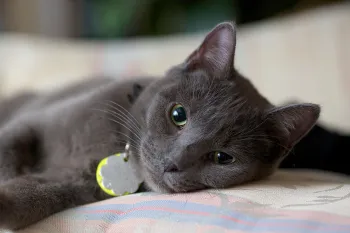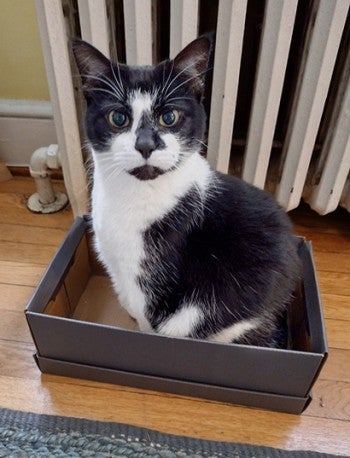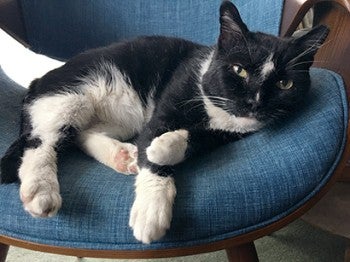Anti-anxiety medication helped Karen Lange’s cat, Pepper, become calmer.
It worked until she was 9. But one night, I was sitting in the darkened kitchen, focused on my computer. I did not see a cat enter our unlit yard or realize that Pepper had moved into the room. Unable to get at the cat invading her territory, she directed her aggression at my leg, tearing open my ankle with her claws and teeth. Shocked, I staggered to the bathtub to put pressure on the wound and stop the bleeding. It would take four months and multiple visits to a wound center before my leg healed.
“You should put her on fluoxetine,” said my husband’s cousin, a veterinarian, after he heard the story. “Fluoxetine?” I asked. Like many, I had heard of Prozac being used to treat anxiety and depression in humans but wasn’t familiar with its generic name and didn’t know it’s been prescribed to treat anxiety in cats since the mid- to late 1990s. That’s a common reaction, says Dr. Anna Delabar, a Missouri state representative for the Humane Society Veterinary Medical Association. Delabar, one of the founders of the Pet Wellness Alliance, a nonprofit veterinary clinic in Columbia, Missouri, says pet owners worry fluoxetine will change their pet’s personality.
Rather than “drugging” cats, though, fluoxetine simply reduces anxiety. This allows cats who might otherwise spend their days under a bed to emerge from hiding, stops compulsive behavior such as overgrooming and resolves behavioral issues that might make it difficult for people to keep their pets, says Delabar. Sometimes cats take the medication, which should only be given after consulting a veterinarian, for a short time. Often they take it for the rest of their lives. “It’s addressing their emotional and behavioral health,” Delabar says.
Veterinarians who went to vet school years ago may not be familiar with fluoxetine, says Dr. Nicholas Dodman, an HSVMA member, chief scientific officer at the Center for Canine Behavior Studies (which also covers cats) and pioneer in the use of anti-anxiety medication for cats. But today, it’s the “new normal” for treating feline anxiety, which has been on the rise since cats were brought indoors, he says. Some anxiety is a survival mechanism. It’s when instincts are frustrated that it becomes a problem, Dodman says, noting the importance of giving indoor cats windows to look out, high places to perch on, play that takes the place of hunting and time outdoors in catios or on leashes. That way cats can be kept safe and live longer, as indoor pets do, while also engaging in natural behaviors they enjoy.




